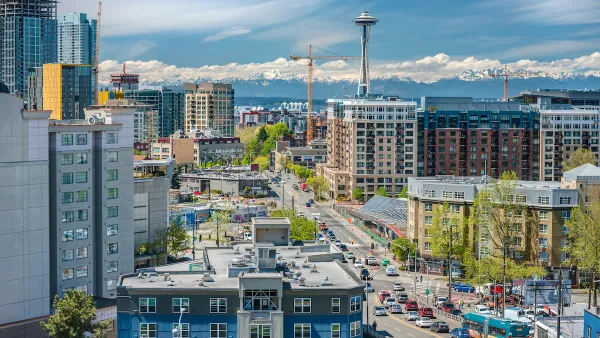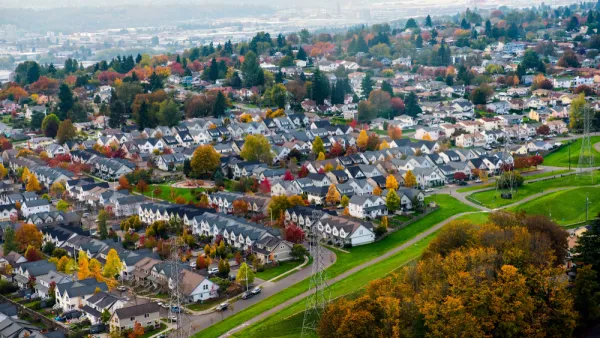Census data shows that Seattle jumped Baltimore to become the country's tenth most densely populated city. Is Seattle on the cusp of a changing of the guard when it comes to density and population growth?

"Analysis of census data shows that Seattle — for the first time in its history — ranks among the top 10 most densely populated big cities in the U.S.," according to an article by Gene Balk.
"With 7,962 people per square mile in 2014, Seattle leapfrogged Baltimore into the No. 10 spot among the 50 most populous cities in the country. Seattle’s population density has increased by nearly 10 percent since the 2010 Census. And if current growth rates continue, we’ll bypass No. 9 Los Angeles within five years," adds Balk.
Balk places the new density figures in context of the city's ongoing development controversies, which erupted most publicly with the Housing Affordability and Livability Agenda (HALA) last year. Balk speaks extensively with Branden Born, associate professor of urban design and planning at the University of Washington, about the "D" word (density)—how the public perceives it and how they misperceive it. Born looks around the city and notes examples of density done right, as well as some example of how new development has changed the character of neighborhoods. Born predicts "a changing of the guard is under way when it comes to density and growth."
FULL STORY: Seattle among top 10 most densely populated big cities in the U.S. for first time ever

National Parks Layoffs Will Cause Communities to Lose Billions
Thousands of essential park workers were laid off this week, just before the busy spring break season.

Retro-silient?: America’s First “Eco-burb,” The Woodlands Turns 50
A master-planned community north of Houston offers lessons on green infrastructure and resilient design, but falls short of its founder’s lofty affordability and walkability goals.

Delivering for America Plan Will Downgrade Mail Service in at Least 49.5 Percent of Zip Codes
Republican and Democrat lawmakers criticize the plan for its disproportionate negative impact on rural communities.

Test News Post 1
This is a summary

Test News Headline 46
Test for the image on the front page.

Balancing Bombs and Butterflies: How the National Guard Protects a Rare Species
The National Guard at Fort Indiantown Gap uses GIS technology and land management strategies to balance military training with conservation efforts, ensuring the survival of the rare eastern regal fritillary butterfly.
Urban Design for Planners 1: Software Tools
This six-course series explores essential urban design concepts using open source software and equips planners with the tools they need to participate fully in the urban design process.
Planning for Universal Design
Learn the tools for implementing Universal Design in planning regulations.
EMC Planning Group, Inc.
Planetizen
Planetizen
Mpact (formerly Rail~Volution)
Great Falls Development Authority, Inc.
HUDs Office of Policy Development and Research
NYU Wagner Graduate School of Public Service




























